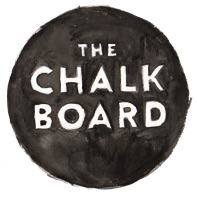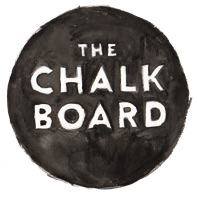Most of us don’t think about our pelvic floor until something feels off—but this group of deep core muscles plays a major role in everything from bladder control and balance to posture and sexual function. “It’s like a woven basket of support for our internal organs,” says Patricia A. Wallace, M.D., a board-certified OBGYN and pelvic floor surgeon.
And yet, many women miss the early signs of dysfunction. From leaking when you sneeze to pain during intimacy, your body could be waving red flags that your pelvic floor needs help. We asked Dr. Wallace to share the 5 signs you shouldn’t ignore—and what you can do to start healing.
5 Signs You May Have a Pelvic Floor Issue or Weakness:
1. Loss of urine with activity, such as laughing, sneezing, or exercise
2. Less sensitivity, friction, grip, laxity during intimacy
3. Lower back pain
4. Poor balance or difficulty getting up from a chair or toilet
5. Pain with intercourse
How Can You address Your Pelvic Floor Concerns
 1. Loss of urine with activity, such as laughing, sneezing, or exercise
1. Loss of urine with activity, such as laughing, sneezing, or exercise
30% of women will report urinary leakage with activity at 12 months following vaginal birth. This is related to the size of the birth, the length of time pushing, and the baseline fitness of the mother’s pelvic floor. It is never too early to learn about how to be strong from the inside out, especially since many women who have never been pregnant or given birth also leak urine in various activities.
Pelvic Floor physical therapy is a real thing- and these experts teach you proper breath, pelvic technique, and body mechanics when lifting or exercising. It is very difficult to body-build your pelvic muscles, so newer technology- like the Emsella high-frequency electromagnetic chair-helps to literally build those muscles without any down-time or invasive exams or treatments. It’s like doing 12,000 pelvic floor contractions in 28 minutes- which is more than we could ever do in our lifetime. 6 treatments over 3 weeks and a few sessions per year will keep you Stronger, Drier, and more Stable.
2. Less sensitivity, friction, grip, laxity during intimacy
The muscles at the opening of the vagina called the transverse perineal muscles are responsible for grip and sensation during penetration. When the soft tissue and muscles have laxity, we have less sensitivity and feeling during intercourse. Also, the bulbocavernosus muscles are responsible for blood flow in clitoral and penile engorgement and therefore are directly related to orgasm in women and men.
Strong pelvic floor muscles and mind-muscle connection are key! Increasing sensitivity to the intimate area with heat, radiofrequency, and vibration enhance blood flow, renewal of collagen and elasticity, and tighten skin. I always recommend addressing tissue and skin health and muscle for optimal pelvic and sexual health. Surgery is sometimes necessary, but I always start with the basics to restore health.
3. Lower back pain
The pelvic floor muscles are the Foundation of the Core, along with the abdominal muscles, the long back muscles and the glutes. When the Core is weak in any one area, it results in poor posture, lower back pain, and functional limitations. Of course, if you are having shooting nerve-like pain in an extremity, it is important to seek medical care and appropriate imaging.
Core to Floor strength is essential for long term stability, balance, reduction in falls, optimal athletic performance, and pelvic and sexual wellness. Working with a trainer, physical therapist, and addressing core weakness with newer modalities like Emsculpt – high-frequency electromagnetic therapy for reducing inflammation and pain and for muscle building can help build a foundation of muscle without pain and effort, allowing you be able to engage in exercises that will help you maintain muscle and sustain your strength.
 4. Poor balance or difficulty getting up from a chair or toilet
4. Poor balance or difficulty getting up from a chair or toilet
As we age, we lose muscle bulk and become weaker (sarcopenia) especially if we don’t have a good foundation of muscle. Also weight loss from GLP-1 peptides, can lead to a 40% loss in muscle all over the body- You have heard about Ozempic face and Ozempic butt-but what about Ozempic pelvic floor? When the pelvic floor muscles are weak, it is much more difficult to balance on one leg in yoga or pilates, do lunges, and even get up from a low chair or toilet.
Falls are the leading cause of injury in adults over the age of 65! Women are at higher risk also because of loss of bone mass.
I recommend “training for life”. Engage in activities that involve resistance training, weight training, and bone stimulating movements. It is always recommended to start slow and light and build strength and stability to avoid injury and set backs. 7000-10000 steps per day with intervals of High-Intensity activities for 1-2 mins- like jumping jacks, jump rope, mountain climbers, jump-squats, etc are a great way to stimulate your metabolism, your muscle, and your bones. I have taught fitness, weightlifting, and now hot yoga for 35 years. It is never too late to “train for life”.
5. Pain with intercourse
Pain with intercourse can result from many things, but if it’s pelvic floor related- pain can be at the entrance (vaginismus) upon entry or deeper from tight (hypertonic) muscles. When the pelvic muscles respond to a weakness in the core or a pelvic asymmetry or injury, they shorten and essentially get “tight” and weak at the same time. Think of having TMJ in your pelvis. The resulting symptoms can be pain, aching, burning, and even bladder urgency and frequency.
Pelvic Health Is Core to Your Wellness—Literally
According to Dr. Wallace, pelvic floor dysfunction is more common than most women realize. “I examine pelvic floor muscles in all my patients, and around 7 out of 10 women are unable to do a proper pelvic floor contraction,” she explains. “Many have weakness, and some also have tenderness along the internal muscles—but they often don’t know it until they’re assessed.”
Treatment typically involves a combination of physical therapy, heat, vibration therapy, and sometimes muscle relaxants to both strengthen weak muscles and release tension in overly tight ones. But getting to the right provider can take time. “Most women see five or six healthcare professionals before they find someone who truly understands pelvic floor dysfunction,” Dr. Wallace adds.
As one of the few specialists in pelvic surgery and sexual medicine, her mission is clear: “I want women to understand how essential the pelvic floor is—not just for core strength and pelvic health, but for sexual wellness and longevity. You deserve to live your best life, in your best body.”














